1 Introduction
1.1 Purpose
1.2 Scope
1.3 Supported Usage Models
1.3.1 Primary Usage Models
1.3.2 Secondary Usage Models
1.4 Design Approach
1.5 Solution Flexibility
1.6 User Experience
1.6.1 In-band Setup
Setup steps
Setup steps
1.6.2 Out-of-Band Setup
Setup steps
2 References
3 Definitions
4 Core Architecture
4.1 Components and Interfaces
4.1.1 Architectural Overview
4.1.2 Interface E
Enrollee
Registrar
4.1.3 Interface M
AP
Registrar
4.1.4 Interface A
AP
Enrollee
4.2 Registration Protocol
4.3 Security Overview
4.3.1 In-band Configuration
Device Password
Headless Devices
Devices with Displays
Devices with NFC
4.3.2 Guidelines and Requirements for PIN values
4.3.3 Out-of-Band Configuration
Unencrypted Settings
Encrypted Settings
NFC Interfaces Operating in Peer-to-peer Mode
5 Initial WLAN Setup
5.1 Standalone AP
Security Considerations
5.2 AP With an External Registrar
5.2.1 EAP-based Setup of External Registrar
Mental model mapping
5.2.2 Ethernet-based Setup of External Registrar
6 Adding Member Devices
6.1 In-band Setup Using a Standalone AP/Registrar
Setup steps
6.2 In-band Setup Using an External Registrar
6.2.1 PIN based setup - External Registrar trigger first
6.2.2 PBC based setup – External Registrar trigger first
6.2.3 PIN based setup – Enrollee trigger first
6.2.4 PBC based setup – Enrollee trigger first
6.3 In-band Setup Using Multiple External Registrars
6.4 Secure Setup with Legacy Enrollee
Setup steps
6.4.1 Mental model mapping
7 Registration Protocol Definition
7.1 Registration Protocol Initiation
7.2 Registration Protocol Messages
7.2.1 Optional Parameters
M2 – ConfigData
M2D – Registrar Discovery Message
M7 – ConfigData
M8 – ConfigData
7.2.2 Validation of Configuration Data
7.3 Key Derivation
1536-bit MODP Group for Diffie-Hellman Exchange
Derivation of KDK
Derivation of AuthKey, KeyWrapKey, and EMSK
Application-specific master session keys
7.4 Proof-of-possession of Device Password
7.4.1 PIN Checksums
7.4.2 Device Password Splitting
7.4.3 Device Password Usage in M1 and M2
7.5 Key Wrap Algorithm
7.6 Key Summary and Classification
7.7 EAP Transport of Registration Protocol
7.7.1 EAP Message Framing
The Message Length field, if included, contains the total length of the WSC TLV attributes in the WSC message.
The Message Data field contains the WSC TLV attributes. The WSC message may be fragmented and placed in multiple EAP packets.
Fragmentation and Reassembly
EAP Identity
7.7.2 EAP Messages
WSC_Start
WSC_ACK
WSC_NACK
WSC_MSG
WSC_Done
WSC_FRAG_ACK
7.7.3 EAP State Machine for Enrollee Registration
7.7.4 EAP State Machine for Adding an External Registrar
7.8 UPnP Transport of Registration Protocol
7.9 Version Negotiation
8 Message Encoding
8.1 Wi-Fi Simple Configuration TLV Data Format
8.2 802.11 Management Frames
Wi-Fi Simple Configuration Information Element
8.2.1 Beacon Frame (C)
8.2.2 Association Request and Reassociation Request
8.2.3 Association Response and Reassociation Response
8.2.4 Probe Request (D-E or D-R)
8.2.5 Probe Response (D-AP/Registrar)
8.3 Registration Protocol Message Definitions
8.3.1 Message M1
8.3.2 Message M2
8.3.3 Message M2D
8.3.4 Message M3
8.3.5 Message M4
8.3.6 Message M5
8.3.7 Message M6
8.3.8 Message M7
8.3.9 Message M8
8.3.10 WSC_ACK Message
8.3.11 WSC_NACK Message
8.3.12 WSC_Done Message
8.4 AP Settings Message Definitions
8.4.1 SetSelectedRegistrar Message
9 Security Configuration Requirements
10 NFC Out-of-Band Interface Specification
10.1 NFC Usage Models
10.1.1 Password Token
10.1.2 Configuration Token
10.1.3 Connection Handover
10.2 Requirements for NFC Out-of-Band Support
10.2.1 Enrollee Requirements
10.2.2 Registrar Requirements
10.2.3 P2P Registrar Requirements
11 Push Button Configuration
11.1 Introduction
11.2 User Experience
11.3 PBC Technical Description
11.4 PBC Security Considerations
12 Data Element Definitions
13 Protocol Implementation Conformance Specification (PICS)
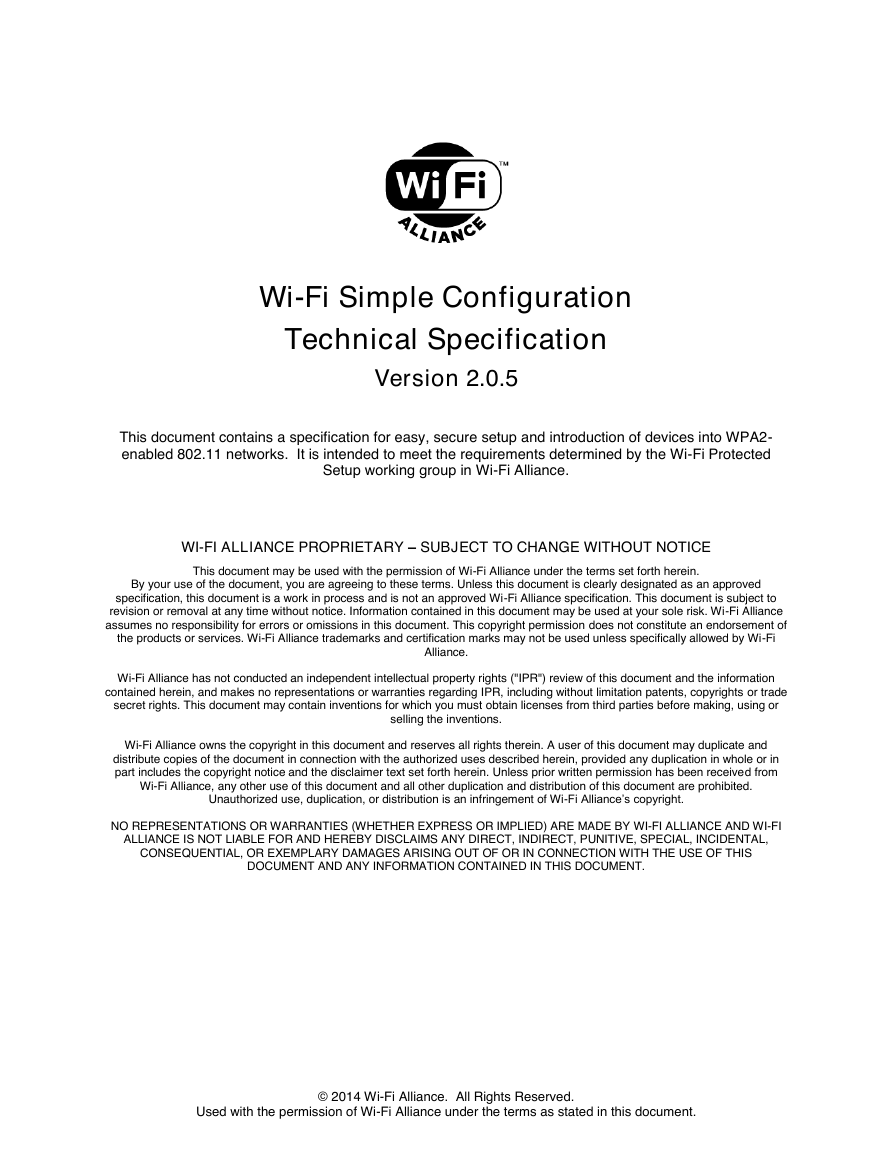

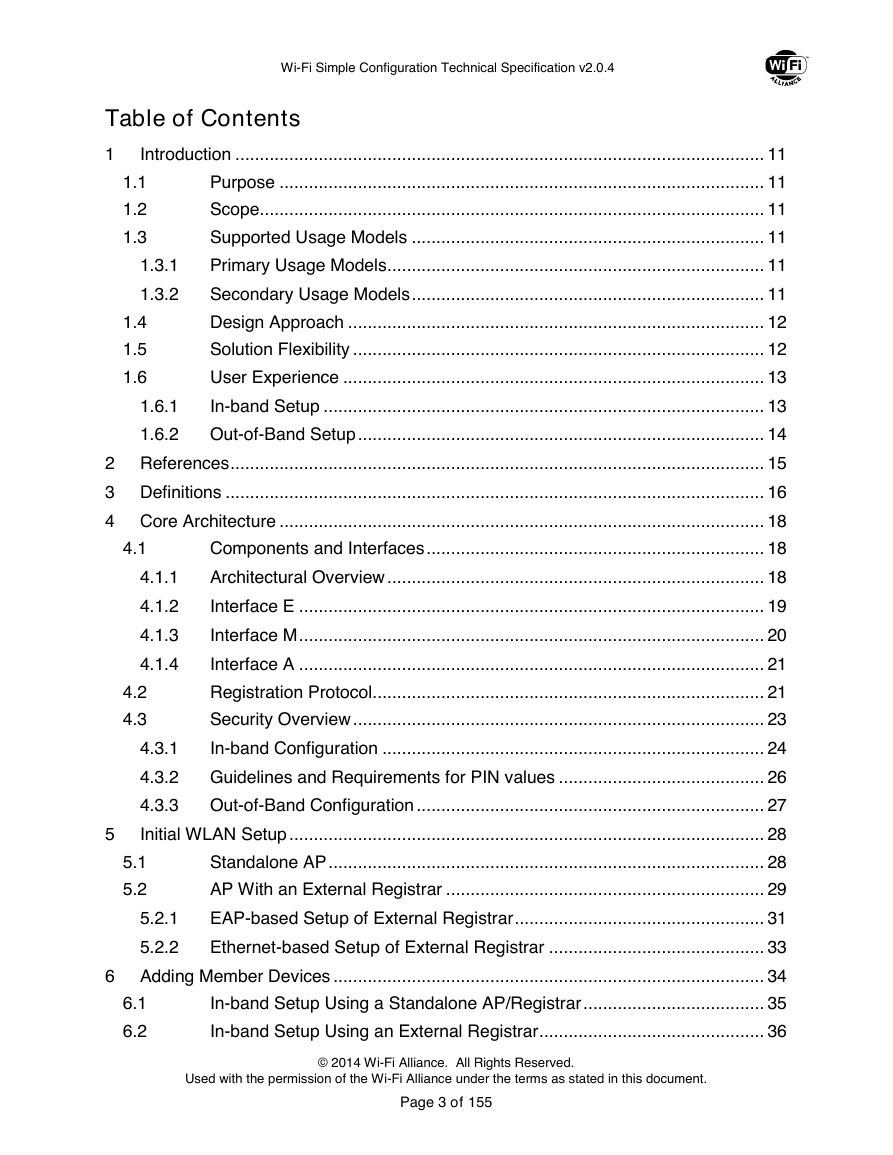
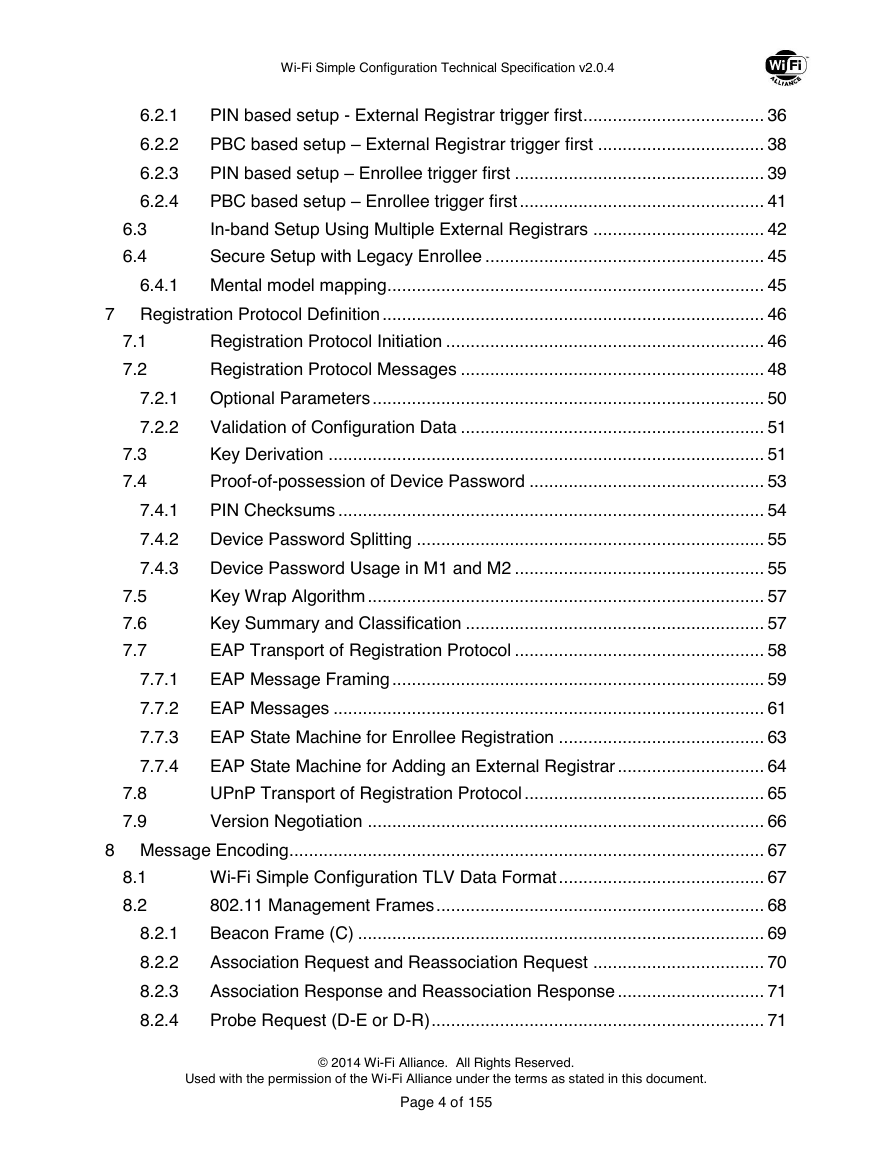
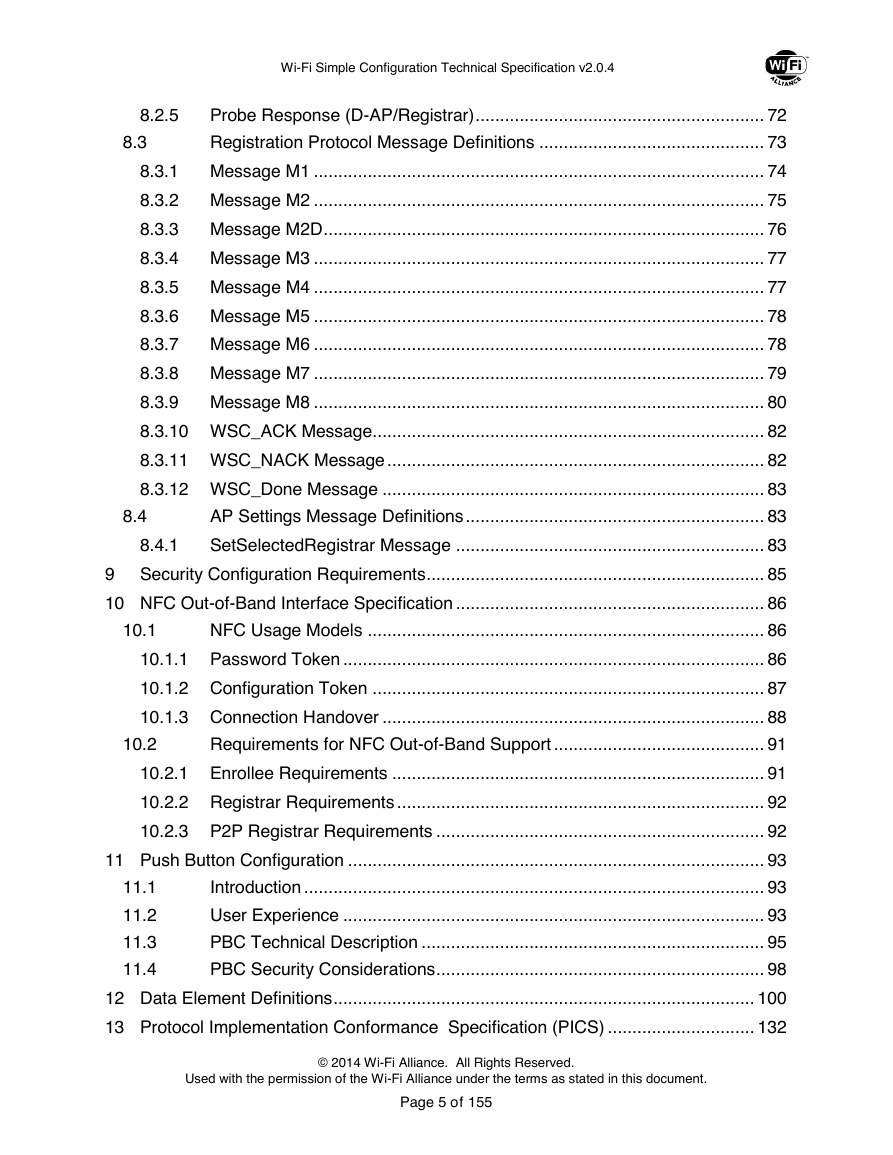

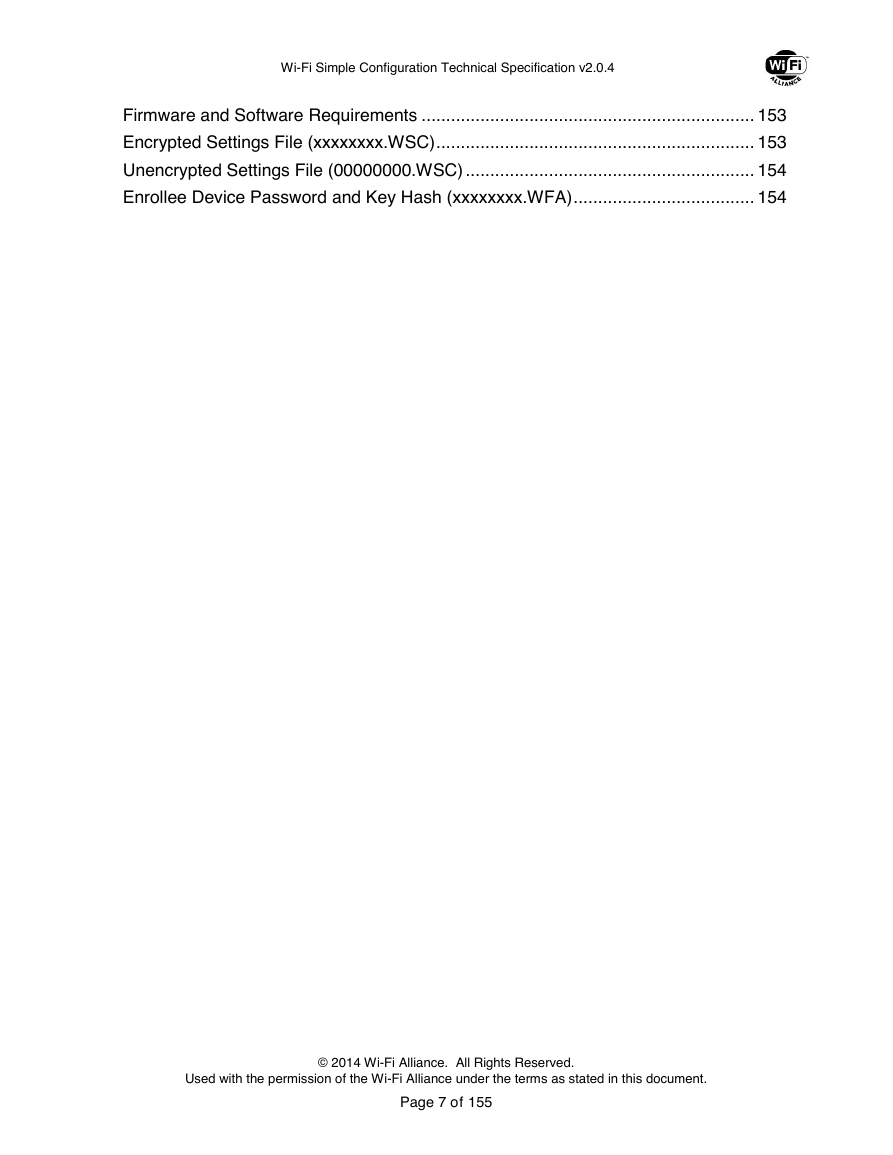
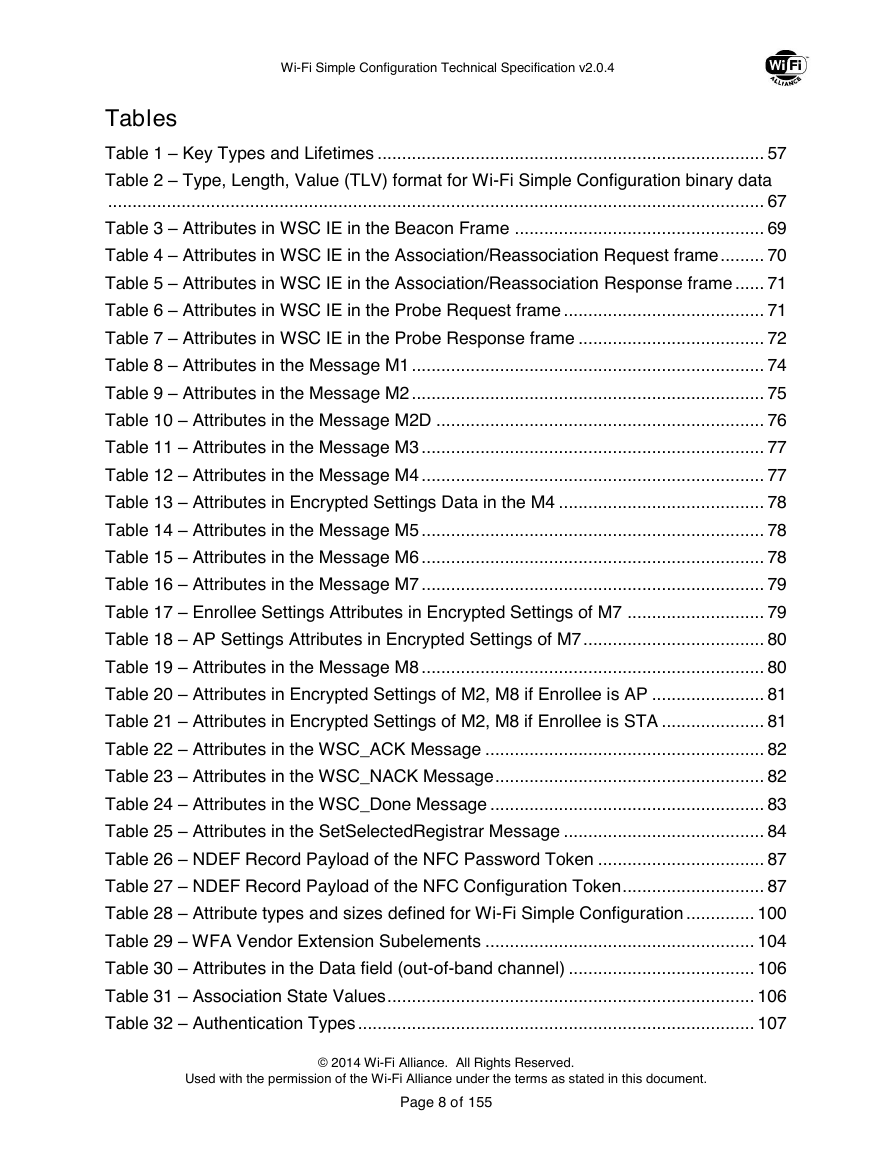








 2023年江西萍乡中考道德与法治真题及答案.doc
2023年江西萍乡中考道德与法治真题及答案.doc 2012年重庆南川中考生物真题及答案.doc
2012年重庆南川中考生物真题及答案.doc 2013年江西师范大学地理学综合及文艺理论基础考研真题.doc
2013年江西师范大学地理学综合及文艺理论基础考研真题.doc 2020年四川甘孜小升初语文真题及答案I卷.doc
2020年四川甘孜小升初语文真题及答案I卷.doc 2020年注册岩土工程师专业基础考试真题及答案.doc
2020年注册岩土工程师专业基础考试真题及答案.doc 2023-2024学年福建省厦门市九年级上学期数学月考试题及答案.doc
2023-2024学年福建省厦门市九年级上学期数学月考试题及答案.doc 2021-2022学年辽宁省沈阳市大东区九年级上学期语文期末试题及答案.doc
2021-2022学年辽宁省沈阳市大东区九年级上学期语文期末试题及答案.doc 2022-2023学年北京东城区初三第一学期物理期末试卷及答案.doc
2022-2023学年北京东城区初三第一学期物理期末试卷及答案.doc 2018上半年江西教师资格初中地理学科知识与教学能力真题及答案.doc
2018上半年江西教师资格初中地理学科知识与教学能力真题及答案.doc 2012年河北国家公务员申论考试真题及答案-省级.doc
2012年河北国家公务员申论考试真题及答案-省级.doc 2020-2021学年江苏省扬州市江都区邵樊片九年级上学期数学第一次质量检测试题及答案.doc
2020-2021学年江苏省扬州市江都区邵樊片九年级上学期数学第一次质量检测试题及答案.doc 2022下半年黑龙江教师资格证中学综合素质真题及答案.doc
2022下半年黑龙江教师资格证中学综合素质真题及答案.doc